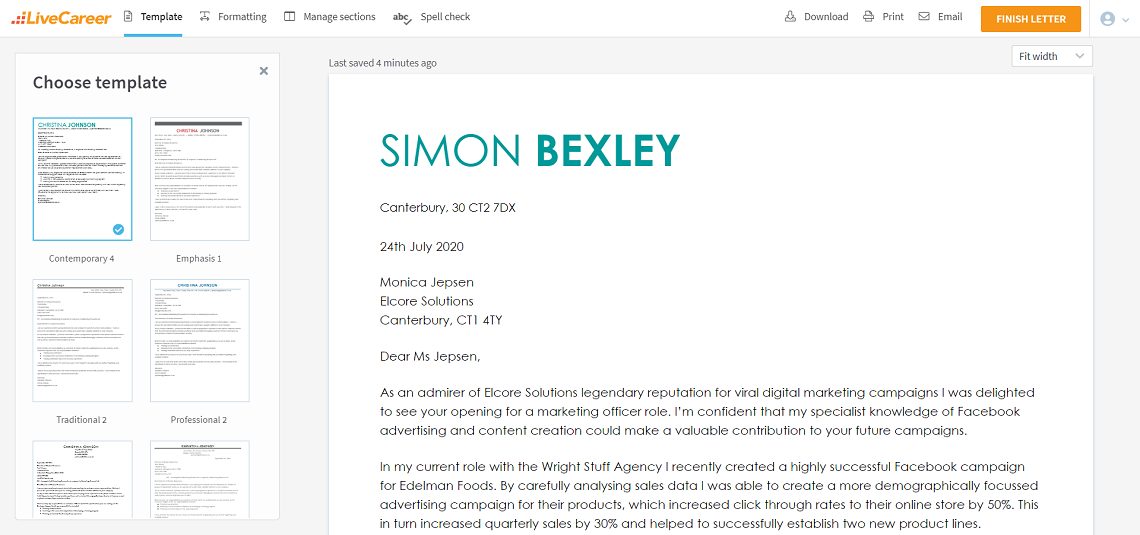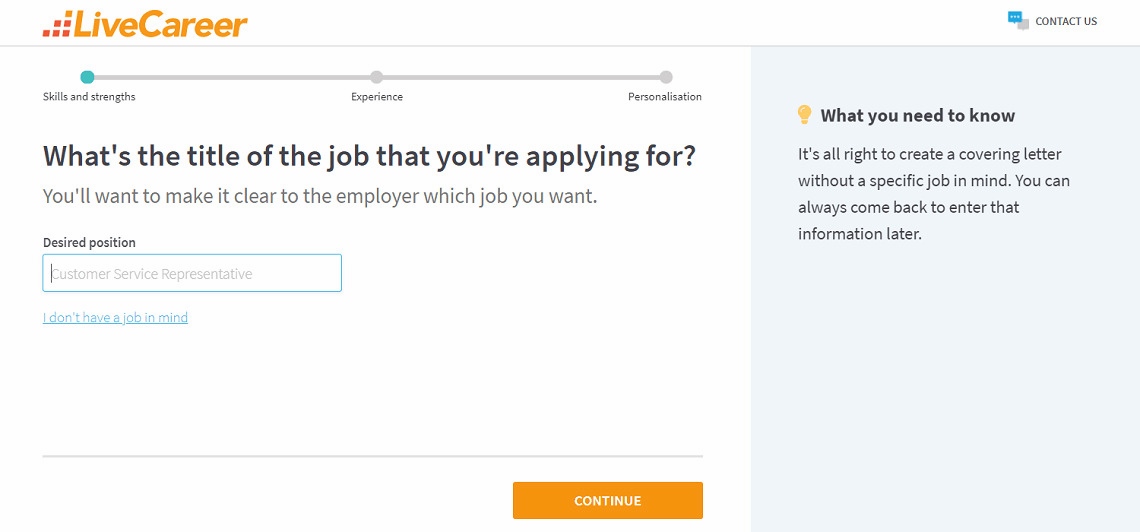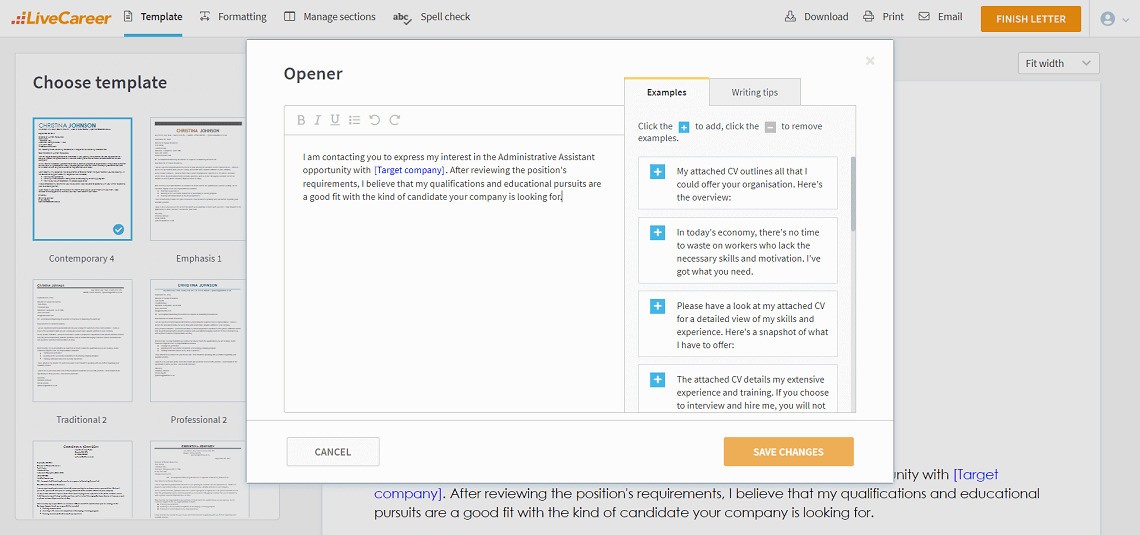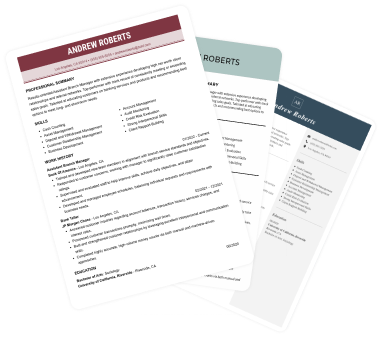
Business Analyst Cover Letter: Examples & How to Write
A data-driven approach to writing a business analyst cover letter whether your application is for a graduate, entry-level or senior business analyst position.
November 7, 2025
Last updated on 7 November, 2025

Addressing a cover letter correctly is easy. However, you need to understand the rules, plus you must know who to address your cover letter to.
I’ll show you how to get each cover letter off to a strong start. You’ll learn how to address a cover letter to UK standards, who to address a cover letter to, how to address a cover letter without a name, and more.
Use the LiveCareer cover letter builder and your cover letter will write itself. Choose a professional template, answer a few easy questions and the creator will generate a professional cover letter for you with just one click.

A cover letter is a formal document. As such, it has to follow certain business letter etiquette (including the right cover letter structure). On top of that, addressing your cover letter correctly isn’t just good practice; it’s proof positive of professionalism and communication skills.
Fact: Even in cases where companies don’t require cover letters, 73% of managers still read them. Taking the time to get it right can make a real difference.
Follow this simple sequence when preparing your cover letter salutation and header:
To identify who to address your cover letter to, start by re-reading the advert. Job listings often state a point of contact (a name, job title, or recruiter). Look for words such as “contact”, “apply to”, or “for more information, contact”.
If the advert gives a name, that answers the dilemma of whom to address a cover letter to – simply use that person’s name in your salutation.
Practical tip: if the advert is from a recruitment agency, the named person may be the recruiter rather than the hiring manager. If you’re unsure who will receive the application, follow the advert’s instructions or ask the recruiter directly.
If the advert doesn’t list a name, do targeted research before giving up on finding your cover letter’s recipient:
If those searches still don’t return a name, it’s fine to phone the company and ask politely: “Hello – I’m applying for the [job title] and I’d like to address my application correctly; could you tell me the name or title of the person responsible for hiring?” Even a confirmed job title, such as Head of Customer Experience, is better than a totally anonymous greeting.
Here’s how to address a cover letter without a name: opt for a clear, specific, and professional greeting rather than an outdated or overly broad option. Always start with “Dear”, not “Hi” or “Hey”. Good choices include:
These are warmer and more specific than “To Whom It May Concern” or “Dear Sir/Madam”. That’s how you address a cover letter to an unknown recipient—simply use a role- or team-based salutation that shows you’ve thought about who should receive the letter.
When you have a person’s name, personalise the opening. Use “Dear” followed by the person’s full name, for example: “Dear John Smith” or “Dear Alicia McDonald”. This avoids assuming gender or preferred title. Here’s some guidance on titles:
Here are some examples of correct cover letter salutations you can take inspiration from:
Cover letters are viewed as an essential part of the decision-making process by 83% of recruiters, so every detail matters when writing a cover letter. Take a look at an example of a perfectly set-out cover letter address below.
Simon Bexley
57 Old Farm Lane
Canterbury
CT2 7DX
24th July 2025
Monica Jepsen
Head of Marketing
Elcore Solutions
24 Enterprise Avenue
Canterbury
CT1 4TY
Now, here’s how to format the cover letter address, step by step:
You can adjust every cover letter created in the builder to meet the job requirements. Choose the name of your profession and the company to which you’re applying, and the LiveCareer cover letter builder will automatically adapt the content for you. Create a cover letter faster than you ever thought possible and apply for the job in record time.

When you send a cover letter as the body of an email (this applies to acceptance letters and appeal letters, too), you need to address your cover letter differently.
Here’s how to address an email cover letter:
Some common pitfalls and cover letter addressing mistakes are closely related – both can make a good application look careless. Here is what to avoid in the cover letter’s address:
From our builder insights, we identified the top 10 professions that most often create cover letters*:
*The data comes from a period of 12 months (September 2023–September 2024).
Writing your first cover letter? Check out our other cover letter guides:
You don’t have to create any content yourself. The LiveCareer cover letter generator will automatically suggest the best content for your cover letter with ready-made examples and expert tips.

Now you know everything about how to address a cover letter for a job, even when you don’t know the hiring manager’s name. If you’d like to learn more about cover letters or other career-related topics, head over to our blog for more articles.
Our editorial team has reviewed this article for compliance with LiveCareer’s editorial guidelines. It’s to ensure that our expert advice and recommendations are consistent across all our career guides and align with current CV and cover letter writing standards and trends. We’re trusted by over 10 million job seekers, supporting them on their way to finding their dream job. Each article is preceded by research and scrutiny to ensure our content responds to current market trends and demand.
Category: Cover Letter
Crafting a job-winning CV is all about showcasing your unique skills and experiences. Start with a strong personal statement that highlights your career goals and achievements.
Try Our CV Builder Now